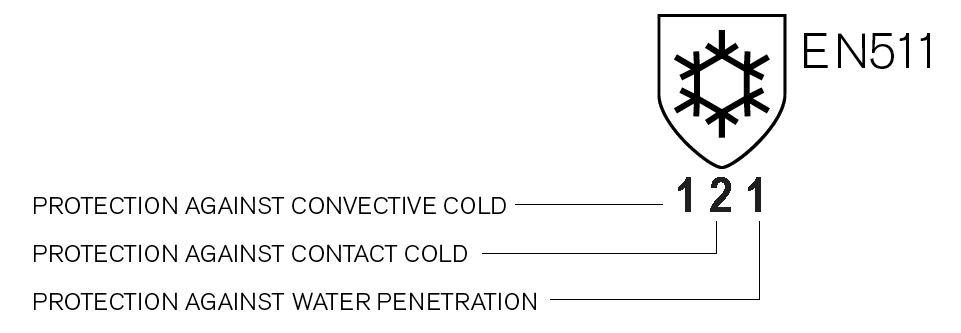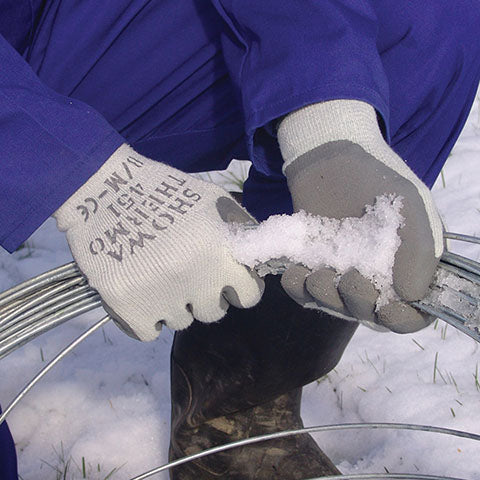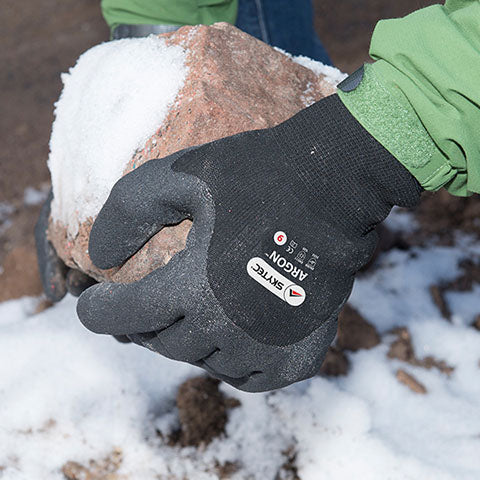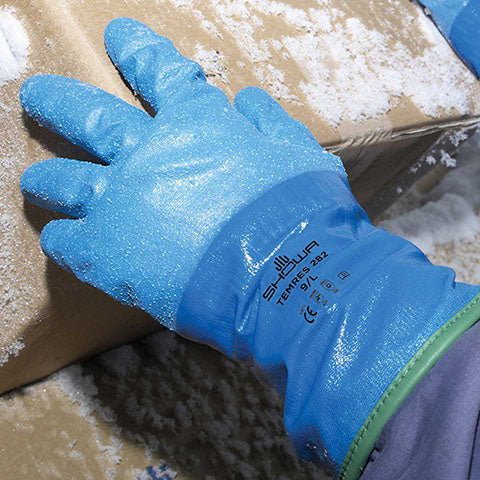Your Cart is Empty
📞 01246 268649 🚚 FREE DELIVERY
Menu

📞 01246 268649 🚚 FREE DELIVERY
Clothing
Cold Weather Work Gloves
October 27, 2023

Weather is the universal language of the world. No matter where on the globe you are, weather is a common communicator. A vigorous rubbing of the hands with a wry smile, a mopping of sweat from your forehead or the rubbing down of your own upper arms will instantly convey your thoughts regardless of whether you share a common language. The one element that can never be lost in translation is the Cold!
I’ll start this post with a question: Why do your hands get cold so easily and quickly? The answer is simple. When you encounter very low temperatures your body will react by reducing blood flow to its extremities. It does this to essentially keep your core temperature at its most optimum (helping you survive), this means your hands and feet, which are not as important as your core suffer much more quickly.
Therefore when temperatures plummet it is essential that we protect our hands with cold weather gloves. These can be used for a multitude of tasks ranging from working on cold railway lines, construction related tasks, snow shovelling or just a good old snowball fight!
Some of the risks of not protecting your hands properly:
Increased chance of accidents:
When your hands become cold they become less dextrous and can begin to feel “seized up” or clumsy. When this essential loss of feel sets in, things can become very hairy, especially if you are working with power tools or sharp hand tools. It’s easy for your grip to slip and cause yourself an injury. It’s also dangerous when working at height as you become much more likely to lose grip on tools and materials putting those below you in harms way.
Frostbite:
When the skin begins to freeze you can become susceptible to frostbite. Areas of the body that are most at risk are hands, feet, ears and noses. The symptoms of frostbite include numbness, swelling and blisters. There are varying degrees of seriousness with frostbite going from 1st degree (least serious) to 4th degree (most serious), which can lead to the loss of fingers and toes.
Loss of Revenue for Business:
Thermal gloves can be expensive, certainly more than standard work gloves. However companies that think they are saving a few quid by not providing proper cold protection are sadly mistaken. Consider the amount of time lost by workers who are constantly warming their hands! Consider the mind set and overall productivity of a worker who as constantly got cold hands! Consider the potential costs of injury claims due to neglecting a workers safety! Cost saving here is false economy and morally wrong.
The EN511 Standards:
This is the standard set out by the EU for winter work gloves that protects against convective and contact cold down to a temperature of minus 50 degrees Celsius.

EN511 carries out three tests
- Resistance to convective cold which is scored between 0 – 4. Zero been the lower end of protection and 4 been the higher.
- Resistance to contact cold which is scored between 0 – 4. Zero been the lower end of protection and 4 been the higher.
- Protection against water ingress which is scored either 0 or 1. 0 indicates water penetration after thirty minutes and 1 indicates no water penetration after thirty minutes.
Features to look out for in a cold weather safety glove:
When selecting the right option for yourself or your work force it’s important to assess the tasks you undertake on a daily basis and the risks that ensue from those activities. Here are a few features we think you should be considering when purchasing gloves.
Waterproof:
Wet hands equal cold hands. No matter how good the insulation, if it gets a soaking it’s not going to perform optimally for you. Thankfully there are lots of options available with waterproof coatings and waterproof membrane liners. If your job requires working with liquids or you spend the vast amount of your time in the great outdoors waterproof is a no brainer.
Windproof:
Once again if you are working outside it's important to consider the potential effects of the wind chill factor. The wind can cause working temperatures to be considerably lower than the temperature shown on a Celsius scale. Thankfully it is possible to purchase gloves that come with a windproof membrane to combat against this.
Dexterity:
Fit is king. If a glove is not suitable for a task the first thing they will do is remove it to make it easier to perform said task! That’s the last thing you want. There are many dexterous gloves available that offer a really good fit and feel. It’s almost impossible to get the same level of fit as a standard work glove but modern insulating technology is getting ever closer and there are certainly some very viable options out there.
Breathable:
Whilst it is important to prevent water penetrating into the glove it’s also equally important to let perspiration escape. This is where a quality liner with breathable qualities steps up. Allowing the escape of sweat build up will keep your hands feeling fresh and let the insultion do its job.
Here are a few cold weather gloves worth consideration:
A dexterous offering that gives a good range of movement and offers excellent grip levels with a textured latex palm coating. The back of the hand is breathable allowing for good perspiration release. The liner is a mix of acrylic, cotton and polyester that help keep hands warm.
The argon comes with a soft thermal liner and will remain supple down to an impressive minus 50 degrees celsius. It as a solid cold contact resistance of 2 on the EN511 scale. The palm and knuckles are coated in a protective HPT foam that will help resist against abrasion and tearing whilst also offering impressive grip in dry and wet conditions.
MaxiTherm 30-202 Three Quarter Coating
Latex foam ¾ coated thermal handling glove, which is designed to provide comfort and protection in cold environments down to minus 30 degrees. Natural latex grip is ideal for both wet and dry conditions.
The Temres 282 is a real heavyweight in the cold weather gloves arena. It is waterproof, breathable and lined with a super warm acrylic. It has a double polyurethane coating that provides outstanding levels of grip as well as high resistance to tearing, abrasions and cuts. It scores 0.2.1 on the EN511 scale.




